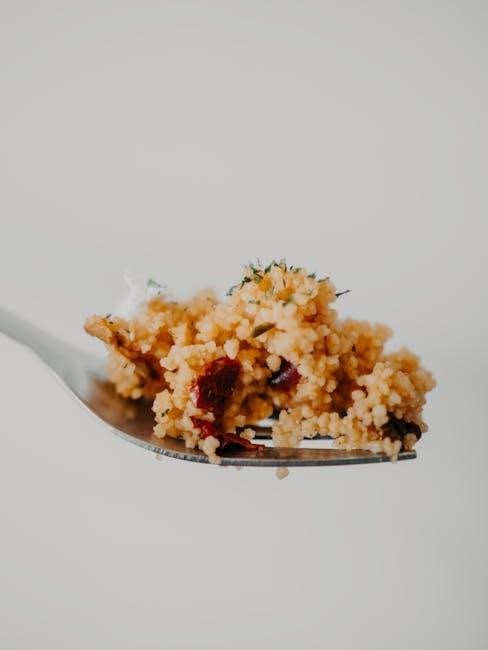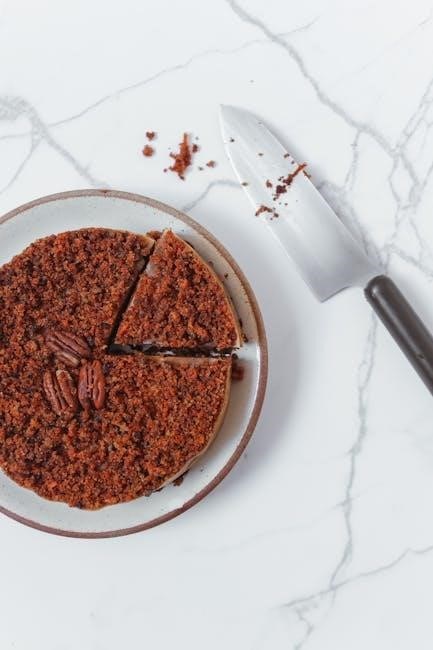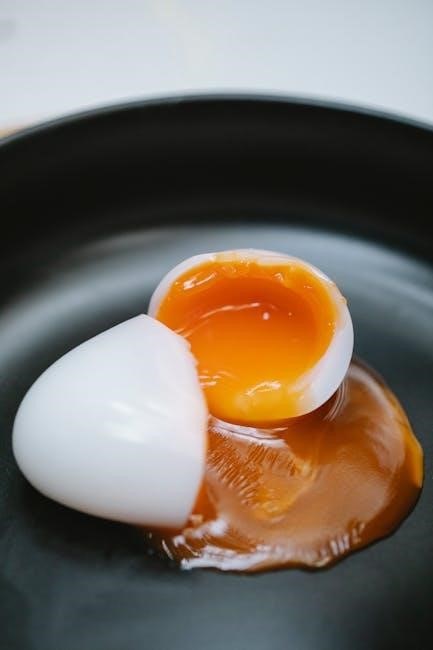cooks shank portion ham cooking instructions

The shank portion ham, cut from the lower leg near the hoof, is a leaner, bone-in cut, often preferred for its rich flavor. It is typically more budget-friendly than the butt portion and is ideal for slow cooking or baking to achieve tender results.

Understanding the Shank Portion vs. Butt Portion
The shank and butt portions of a ham come from different parts of the pig’s leg, each offering distinct characteristics. The shank portion is located near the hoof, making it leaner with more connective tissue, ideal for slow cooking to achieve tenderness. In contrast, the butt portion is situated closer to the pig’s rear, containing more fat, which enhances juiciness and flavor when roasted or glazed.
Cooking methods vary for each cut; shank portions benefit from slow cooking or braising, while butt portions excel with roasting or glazing. The shank’s larger bone can affect cooking and carving, whereas the butt portion may have smaller bones, simplifying serving. Price-wise, shank portions are often more budget-friendly, appealing to those seeking a hearty texture for dishes like stews. Butt portions, with their richer flavor and tenderness, are frequently chosen for special occasions.
Flavor profiles differ too; shank portions absorb seasonings well, while butt portions offer a naturally robust taste. Understanding these differences helps in selecting the appropriate cut based on desired texture, flavor, and culinary use.

Cooking Methods
Cooking a shank portion ham can be done through various methods, including baking, slow cooking, and grilling. Each method enhances the ham’s flavor and texture, ensuring a delicious result. Proper techniques and tools are essential for achieving perfection in every cooking approach.
Baking
Baking is a popular method for cooking a shank portion ham, offering a balanced blend of flavor and moisture. Start by preheating your oven to 325°F (160°C). Place the ham fat-side up in a roasting pan lined with foil or parchment paper to prevent sticking. Add about 1/2 inch of water to the pan to maintain humidity and promote even cooking. Cover the ham with foil to avoid drying out, especially during the initial stages. Bake for approximately 10 minutes per pound, or until the internal temperature reaches 145°F (63°C). For a standard 8-10 pound shank portion ham, this typically takes 1.5 to 2 hours. Midway through cooking, you can remove the foil to allow the surface to brown slightly. If desired, glaze the ham during the last 20-30 minutes of baking for a sweet or savory finish. Once cooked, let the ham rest for 10-15 minutes before slicing to ensure juices redistribute evenly. This method ensures a tender, flavorful result that’s perfect for any occasion. Always use a meat thermometer to confirm proper doneness for food safety.
Slow Cooking
Slow cooking is an excellent method for preparing a shank portion ham, as it ensures tender and flavorful results. Place the ham fat-side up in a slow cooker or crock pot, adding a small amount of liquid such as water, broth, or juice to the bottom of the pot. Cook on low for 8-10 hours or high for 4-6 hours, allowing the ham to absorb the moisture and develop rich flavors. The low heat breaks down the connective tissues, making the meat exceptionally tender. For best results, the internal temperature should reach 145°F (63°C) by the end of cooking. If desired, brush the ham with a glaze during the last 30 minutes to 1 hour of cooking for a caramelized finish. This method is ideal for busy cooks, as it requires minimal supervision and delivers a perfectly cooked ham with ease. The slow cooker’s gentle heat ensures the ham remains juicy and full of flavor, making it a crowd-pleasing option for any meal. Always use a meat thermometer to confirm proper doneness for food safety. This method is particularly well-suited for shank portion hams due to their leaner composition.
Grilling
Grilling a shank portion ham can add a delicious smoky flavor and a caramelized crust to this lean cut of meat. To grill, preheat your grill to a medium-low heat, around 300°F (150°C), to ensure even cooking. Place the ham fat-side up on the grill rack, away from direct heat to prevent burning. Use a meat thermometer to monitor the internal temperature, which should reach 145°F (63°C) for food safety. Wrap the ham in foil if necessary to retain moisture, especially during the later stages of cooking.
Grilling time typically ranges from 20-25 minutes per pound, depending on the size of the ham and the grill’s temperature. For a shank portion ham, which is leaner than the butt portion, it’s crucial to avoid overcooking to maintain juiciness. Baste the ham periodically with glaze or pan drippings to enhance flavor and moisture. Once cooked, let the ham rest for 10-15 minutes before slicing to allow the juices to redistribute. Grilling offers a unique texture and flavor profile, making it a standout method for preparing shank portion ham. Always prioritize low and slow cooking to achieve the best results. This method is perfect for those seeking a crispy exterior and a tender, flavorful interior.

Essential Tools for Cooking Shank Portion Ham
Cooking a shank portion ham requires the right tools to ensure a perfectly prepared meal. A large roasting pan is ideal for baking or slow cooking, as it provides ample space for the ham and any additional liquids or glazes. A meat thermometer is crucial for monitoring the internal temperature, ensuring the ham reaches 145°F (63°C) for food safety. Aluminum foil is handy for wrapping the ham during cooking to retain moisture and prevent drying out.
A slow cooker or crock pot is perfect for low-and-slow cooking, which tenderizes the lean shank portion. Oven mitts are essential for safely handling hot pans or slow cookers. If grilling, a grill rack is necessary to hold the ham securely over the flames. Tongs or a large spatula can be used to carefully turn the ham during cooking. Finally, a sharp knife and cutting board are needed for carving the ham once it’s cooked. These tools ensure a seamless and successful cooking experience, whether you’re baking, slow cooking, or grilling your shank portion ham.

Tips for Achieving Perfect Results
Cooking a shank portion ham to perfection requires attention to detail and a few expert tips. To ensure a deliciously tender and flavorful ham, start by scoring the fat layer in a diamond pattern, which enhances both flavor penetration and texture. Always use a meat thermometer to monitor the internal temperature, aiming for 145°F (63°C) to guarantee safety and doneness.
For a glazed ham, apply the glaze during the last 20-30 minutes of cooking to prevent burning. Tenting the ham with foil during cooking helps retain moisture, especially for leaner shank portions. Let the ham rest for 10-15 minutes before carving to allow juices to redistribute. Finally, choose the right cooking method—baking, slow cooking, or grilling—to suit your preference and ensure a perfectly cooked shank portion ham every time.
Cooking a shank portion ham is a versatile and satisfying experience that offers rich flavors and tender results when done correctly. Whether you choose to bake, slow cook, or grill, this cut of ham is perfect for special occasions or everyday meals. By following the tips and guidelines outlined, you can achieve a perfectly cooked ham that impresses your family and guests.
Remember to always score the fat layer, use a meat thermometer to ensure the internal temperature reaches 145°F, and let the ham rest before carving. These simple steps will help you avoid common pitfalls and ensure a juicy, flavorful outcome. Experiment with glazes or seasonings to add your personal touch, making each ham unique to your taste preferences.
With its budget-friendly price and ease of preparation, the shank portion ham is a great choice for anyone looking to elevate their cooking. So, go ahead, get creative, and enjoy the delightful experience of cooking a shank portion ham!